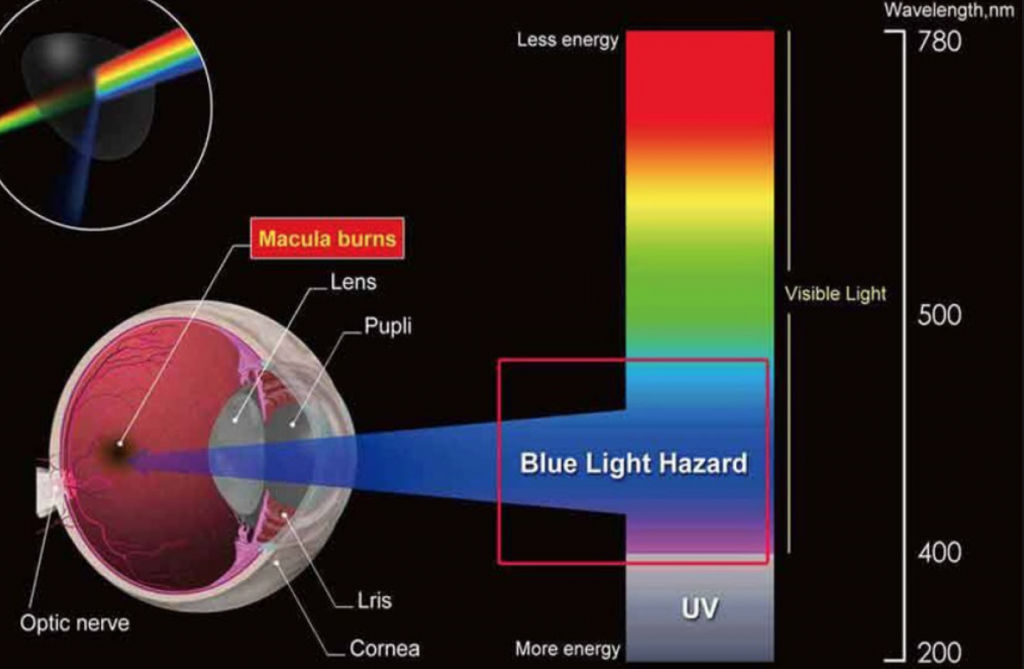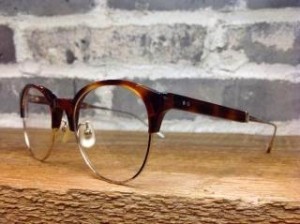UV AND BLUE LIGHT
Ultraviolet (UV) light and blue light. Basically a lot of us know we need glasses to protect on UV light but how many of us can understand more on the harmful blue light that are affecting our vision and overall health.
Do you know that sunlight contains UV and blue light. UV light is part of the non-visible light spectrum and we are exposed to it every day when we’re out in the sun. It can cause damage to our eyes, particularly the cornea and the lens. The overall effect of UV exposure can lead to the common eye problem as many of us know are cataracts as well as other potential eye disease.
Blue light, which is part of the visible light spectrum, reaches deeper into the eye and its can cause damage to the retina. Furthermore, in certain wavelengths, blue light can caused a more complicated eye problem like age-related macular degeneration (AMD). The amount of exposure to blue light varies, depending on the time of day, the location and the season. The average proportion of blue light that’s found in sunlight during the day is between 25% to 30%. Even on a cloudy day, up to 80% of the sun’s UV rays can pass through the clouds.

REMEMBER…. Light also have its good functions. It helps us to see better, it helps us different shape colors, and it helps with some non-visual functions of the body. For example, light helps to regulate our sleep/wake cycle, which in turn helps to maintain and regulate memory, mood and hormonal balance.
The labeled blue-turquoise light range, which is from 465 nm to 495 nm, is essential to our vision, the function of our pupillary reflex, and in general to human health. So blue light in general can have healthy affects on vision as well as the body, and it is this blue-turquoise light that tends to have these beneficial effects. Inadequate light exposure, can affect our biological clock and our sleep/wake cycle. So this blue-turquoise light really plays a vital role in the general health of the individual.
To review, UV light can have an additive effect to damage the eye and can be a major risk factor for the formation of cataract cell life. It’s important to remember and to keep emphasising the fact that not all blue light is bad. Furthermore, blue light also helps to regulate our pupil size around the wavelength of 480 nm.
Just as UV light is dangerous to our skin, it’s also dangerous to our eyes. So it’s important that we protect them from UV damage. UV light affects the front of the eye (cataractformation), while blue light causes damage to the back of the eye (risk of AMD).
Nowadays, there’s an increase in the use of digital devices and modern lighting—such as LED lights and compact fluorescent lamps (CFLs)—most of which emit a high level of blue light. CFLs contain about 25% of harmful blue light and LEDs contain about 35% of harmful blue light. Interestingly, the cooler the white LED, the higher the blue proportion. And by 2020, 90% of all of our light sources are estimated to be LED lighting. So, our exposure to blue light is everywhere and only increasing.
 PROTECTION FROM UV AND BLUE-VIOLET LIGHT
PROTECTION FROM UV AND BLUE-VIOLET LIGHT
How can we block the harmful blue rays of light but allow the helpful blue rays of light to penetrate through and get into the eye? A new lens invention have found. This lens will block out UV as well as the harmful blue-violet light and yet keep the healthy blue light.
Three key features:
1) it selectively filters out harmful blue-violet and UV light,
2) it allows the beneficial visible light, including the blue-turquoise light, to pass through and
3) it maintains an excellent transparency of the lens, so there’s no color distortion and you get excellent clarity with the lens.
They ended up providing a lens with front-side as well as back-side protection. The front side of the lens deflects UV light as well as about 20% of the blue-violet light to then deflect away the harmful rays. And the back side protects the patient from the reflective glare that comes off the back surface of the lens, mainly from UV light. Traditional blue blockers give you pretty sunsets, but that’s not what you want. You don’t want color distortion; you want your colors to be natural. The traditional blue blockers do not discriminate in the blue light spectrum. They just block all the blue light. This new lens technology is based on laboratory studies over a four-year period of time by a high-class group of scientists as well as clinicians who came up with some very important data that allowed them to zoom in on the light that needed to be blocked and the light that needed to get through. So this new lens design really is very specific for more selective light.
Who’s going to need the most protection?
- Those who have high exposure to white LED or fluorescent light bulbs in offices and homes,
- Frequent users of LED computer monitors, tablets, or smart phones, and
- Those at risk for AMD, particularly with family history, smokers, etc).
DO drop by SPECTACLE CULTURE at Pickering, we will show you how to select the correct blue lenses for your eyes protection.
We do have ready stocks for selected prescription and you be able to collect them in 30 mins time.
Hurry down now ![]()

No comments yet.